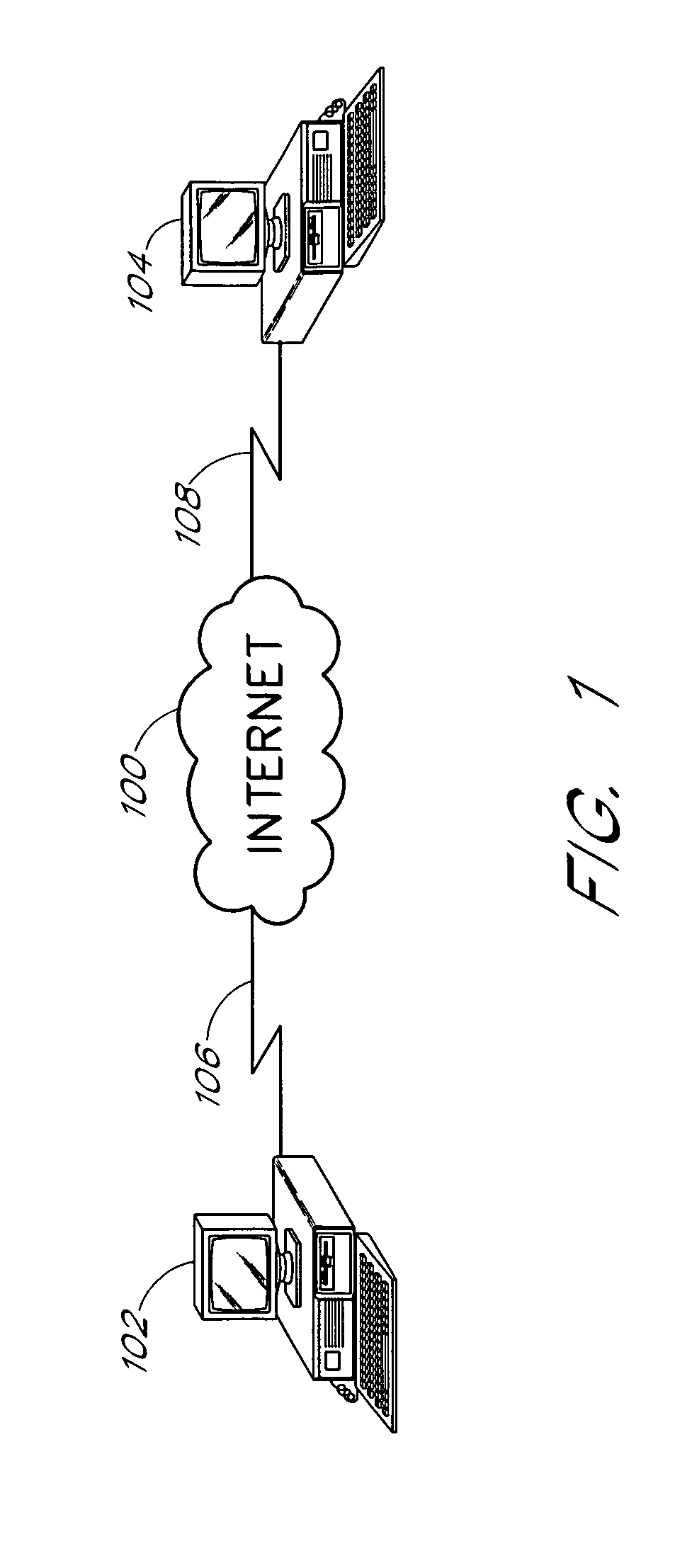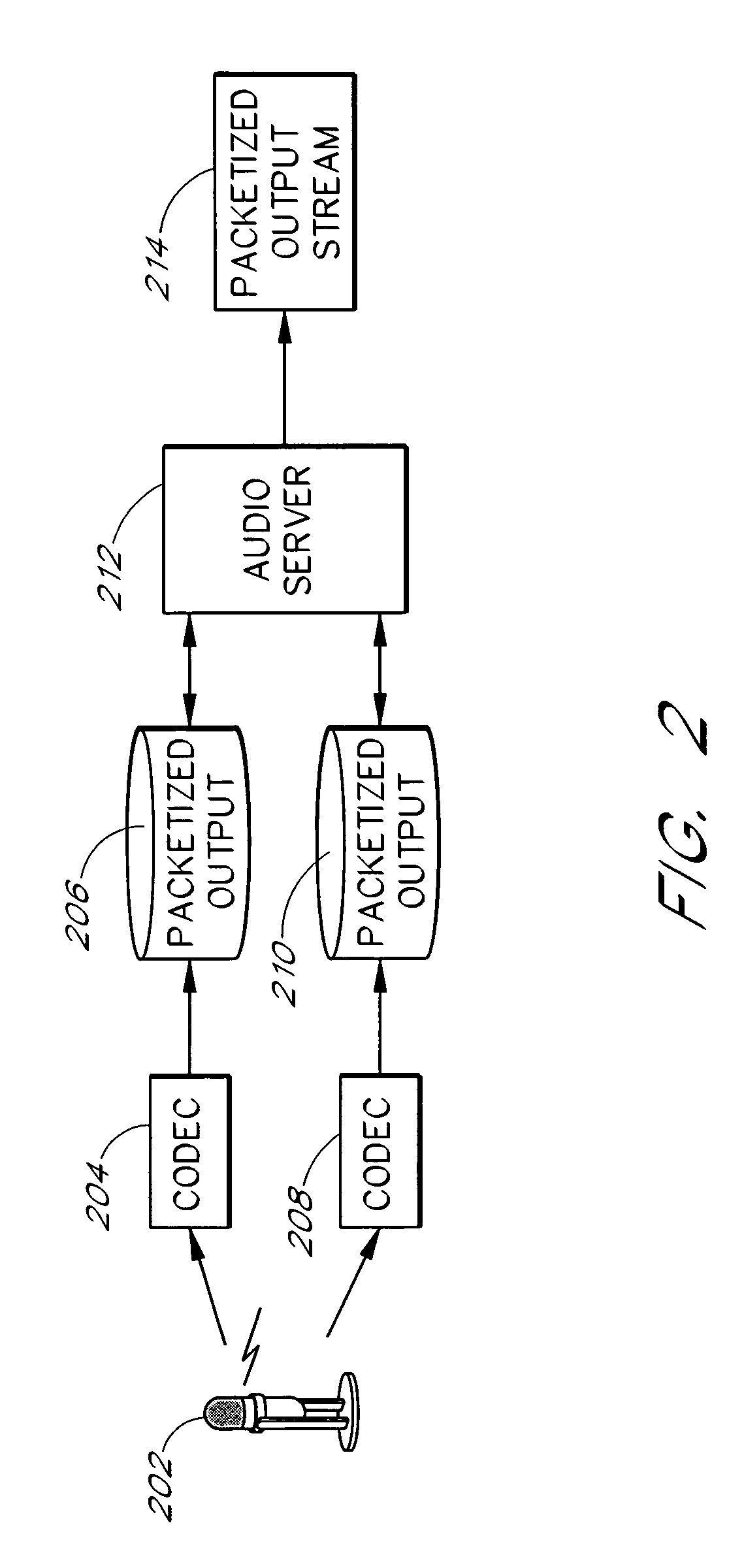System and method for cross-fading between audio streams
a technology of audio streams and cross-fading, applied in the field of audio data processing, can solve the problems of increasing the number and type of communication links, the bandwidth available for any one communication link is always subject to unexpected decreases or increases, and the available bandwidth over these communication links is not always stabl
- Summary
- Abstract
- Description
- Claims
- Application Information
AI Technical Summary
Problems solved by technology
Method used
Image
Examples
Embodiment Construction
[0023]FIG. 1 illustrates a high level diagram of an audio transmission system supporting a cross fade operation. The system includes a network 100, a server computer 102, and a client computer 104. The server computer 102 and the client computer 104 are connected to the network 100 via communication links 106, 108.
[0024]The server computer 102 and the client computer 104 may each be any conventional general purpose computer using one or more microprocessors, such as a Pentium processor, a Pentium II processor, a Pentium Pro processor, a Pentium III processor, an xx86 processor, an 8051 processor, a MIPS processor, a Power PC processor, or an ALPHA processor. Note that the server computer 102 and the client computer 104 could be one of a number of different types of computing devices, including a desktop, portable or hand-held computer, or a network computer.
[0025]The server computer 102 and the client computer 104 preferably include computer-readable storage media, such as standard ...
PUM
 Login to View More
Login to View More Abstract
Description
Claims
Application Information
 Login to View More
Login to View More - R&D
- Intellectual Property
- Life Sciences
- Materials
- Tech Scout
- Unparalleled Data Quality
- Higher Quality Content
- 60% Fewer Hallucinations
Browse by: Latest US Patents, China's latest patents, Technical Efficacy Thesaurus, Application Domain, Technology Topic, Popular Technical Reports.
© 2025 PatSnap. All rights reserved.Legal|Privacy policy|Modern Slavery Act Transparency Statement|Sitemap|About US| Contact US: help@patsnap.com



